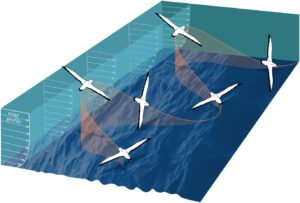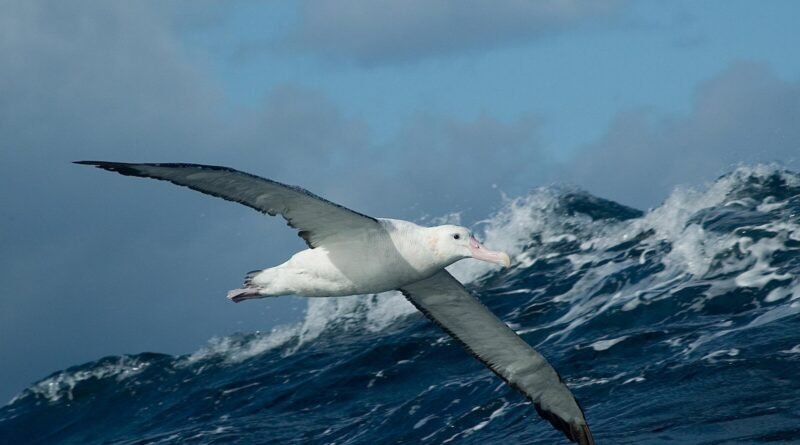How Long Can They Stay in the Air Without Landing?
Albatrosses, the majestic seabirds of the open ocean, have long captured the imagination of researchers and nature enthusiasts alike. With their impressive wingspans and unparalleled flying abilities, these birds are capable of feats that seem almost miraculous. In this article, we delve into the astonishing flight capabilities of albatrosses and explore the factors that allow them to soar across vast expanses of ocean without ever touching land.
I. Introduction
A. The Fascinating World of Albatross
Albatrosses belong to the family Diomedeidae and are known for their remarkable ability to spend months at sea without returning to land. They are primarily found in the Southern Ocean, although some species inhabit the North Pacific and North Atlantic as well.
B. The Impressive Wingspan of Albatross
The wingspan of albatrosses is truly remarkable, stretching up to an impressive 11 feet in certain species. This vast wingspan allows them to glide effortlessly for long distances, using air currents to stay aloft with minimal effort.
C. The Mystery of How Long Albatross Can Fly Without Touching Land
Perhaps the most intriguing aspect of albatross behavior is their ability to remain airborne for extended periods without landing. Researchers have long been fascinated by this phenomenon and have sought to uncover the secrets behind it.
II. Natural Abilities of Albatross
A. Efficient Flying Techniques
Albatrosses are masters of soaring flight, employing a technique known as dynamic soaring to travel long distances with minimal energy expenditure. By harnessing the energy of wind gradients over the ocean surface, they are able to maintain sustained flight for hours on end.
B. Specialized Physical Adaptations
The physical adaptations of albatrosses also play a crucial role in their ability to stay airborne for extended periods. Their large wings provide ample lift, while their streamlined bodies reduce drag, allowing for efficient gliding.
C. Unique Feeding Habits During Flight
Albatrosses have evolved unique feeding behaviors that enable them to nourish themselves while in flight. They are skilled scavengers and will often feed on fish, squid, and other marine organisms that they encounter near the ocean’s surface.
III. Factors Affecting Albatross Flight Duration

A. Environmental Conditions
Environmental factors such as wind patterns, air temperature, and ocean currents can significantly impact the flight duration of albatrosses. Birds may alter their flight paths in response to these variables to optimize their energy expenditure.
B. Energy Conservation Strategies
Albatrosses have evolved various strategies to conserve energy during flight, such as adjusting their wing positions to minimize drag and maximizing the use of favorable wind conditions.
C. Behavioral Patterns During Long Flights
During long flights, albatrosses may exhibit specific behavioral patterns, such as alternating between periods of active soaring and passive gliding. These behaviors help them maintain optimal energy levels throughout their journey.
IV. Record-Breaking Flights by Albatross
A. Extraordinary Feats of Endurance
Albatrosses have been known to undertake remarkable journeys across the open ocean, traveling thousands of miles without rest. These record-breaking flights demonstrate the incredible endurance and stamina of these birds.
B. Notable Observations by Researchers
Researchers studying albatross behavior have made several noteworthy observations regarding their flight patterns and navigation abilities. These findings provide valuable insights into the physiological and behavioral adaptations of these seabirds.
C. Impact of Human Activities on Albatross Flight Patterns
Human activities such as climate change, habitat destruction, and pollution pose significant threats to albatross populations worldwide. These factors can disrupt their natural habitats and migration routes, potentially affecting their ability to undertake long flights.
V. Conservation Efforts for Albatross
A. Issues Threatening Albatross Population
Albatross populations face numerous threats, including habitat loss, overfishing, and bycatch in commercial fishing operations. Conservation efforts are crucial to addressing these issues and safeguarding the future of these magnificent birds.
B. Preservation Initiatives Around the World
Conservation organizations and government agencies around the world are working tirelessly to protect albatross habitats and reduce threats to their survival. These efforts include the establishment of marine protected areas, research initiatives, and public awareness campaigns.
C. Future Challenges and Opportunities for Albatross Conservation
While progress has been made in conserving albatross populations, significant challenges remain. Addressing these challenges will require continued collaboration between governments, conservation organizations, and local communities to ensure the long-term survival of these iconic seabirds.
Conclusion:
In conclusion, the exceptional abilities of albatross to stay in the air for extended periods without landing continue to amaze researchers and enthusiasts alike. By understanding the factors influencing their flight duration and supporting conservation efforts, we can ensure the survival of this magnificent seabird species for generations to come.
FAQs:
Q: How do albatross manage to fly for such long durations?
A: Albatross possess unique physical traits and flight techniques that allow them to conserve energy and travel vast distances without landing.
Q: Are there any current threats to the albatross population?
A: Yes, habitat destruction, pollution, climate change, and bycatch in commercial fishing are major threats to albatross populations worldwide.
Q: How can individuals help in the conservation of albatross?
A: By supporting organizations dedicated to albatross conservation, reducing plastic use, and advocating for sustainable fishing practices, individuals can contribute to the protection of albatross and their habitats.
Q: Do albatrosses ever rest during their long flights?
A: While albatrosses are capable of flying for extended periods without landing, they do rest on the water’s surface occasionally, especially during feeding.
Q: Are there differences in flight behavior among different species of albatross?
A: Yes, different species of albatross exhibit varying flight behaviors and migration patterns based on their habitat preferences and foraging strategies.

